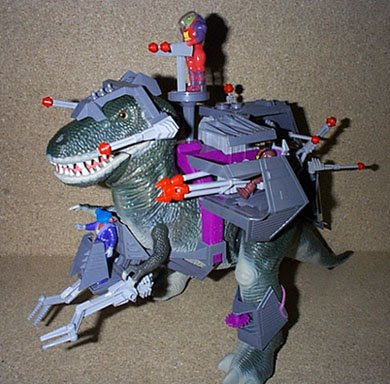SOURCE [http://www.yomiuri.co.jp/dy/features/science/T110108003296.htm]Mammoths, which went extinct about 10,000 years ago, may once again walk the Earth.
A team of researchers will attempt to resurrect the species using cloning technologies after obtaining tissue this summer from the carcass of a mammoth preserved in a Russian mammoth research laboratory. It has already established a technique to extract DNA from frozen cells.
"Preparations to realize this goal have been made," said Prof. Akira Iritani, leader of the team and a professor emeritus of Kyoto University.
Under the plan, the nuclei of mammoth cells will be inserted into an elephant's egg cells from which the nuclei have been removed to create an embryo containing mammoth genes.
The embryo will then be inserted into an elephant's womb in the hope that the animal will give birth to a baby mammoth.
Researchers from Kinki University's Graduate School of Biology-Oriented Science and Technology began the study in 1997.
On three occasions, the team obtained mammoth skin and muscle tissue excavated in good condition from the permafrost in Siberia.
However, most nuclei in the cells were damaged by ice crystals and were unusable. The plan to clone a mammoth was abandoned.
In 2008, Dr. Teruhiko Wakayama of Kobe's Riken Center for Developmental Biology succeeded in cloning a mouse from the cells of mouse that had been kept in deep-freeze for 16 years. The achievement was the first in the world.
Based on Wakayama's techniques, Iritani's team devised a technique to extract the nuclei of eggs--only 2 percent to 3 percent are in good condition--without damaging them.
Last spring, the team invited Minoru Miyashita, a professor of Kinki University who was once head of Osaka's Tennoji Zoo, to participate in the project.
Miyashita asked zoos across the nation to donate elephant egg cells when their female elephants died.
The team also invited the head of the Russian mammoth research laboratory and two U.S. African elephant researchers as guest professors to the university. The research became a joint effort by Japan, Russia and the United States.
If a cloned mammoth embryo can be created, Miyashita and the U.S. researchers, who are experts in animal in vitro fertilization, will be responsible for transplanting the embryo into an African elephant.
The team said if everything goes as planned, a mammoth will be born in five to six years.
"If a cloned embryo can be created, we need to discuss, before transplanting it into the womb, how to breed [the mammoth] and whether to display it to the public," Iritani said. "After the mammoth is born, we'll examine its ecology and genes to study why the species became extinct and other factors."
SOURCE [http://www.telegraph.co.uk/science/science-news/8257223/Mammoth-could-be-reborn-in-four-years.html]Previous efforts in the 1990s to recover nuclei in cells from the skin and muscle tissue from mammoths found in the Siberian permafrost failed because they had been too badly damaged by the extreme cold.
But a technique pioneered in 2008 by Dr. Teruhiko Wakayama, of the Riken Centre for Developmental Biology, was successful in cloning a mouse from the cells of another mouse that had been frozen for 16 years.
Now that hurdle has been overcome, Akira Iritani, a professor at Kyoto University, is reactivating his campaign to resurrect the species that died out 5,000 years ago.
"Now the technical problems have been overcome, all we need is a good sample of soft tissue from a frozen mammoth," he told The Daily Telegraph.
He intends to use Dr Wakayama's technique to identify the nuclei of viable mammoth cells before extracting the healthy ones.
The nuclei will then be inserted into the egg cells of an African elephant, which will act as the surrogate mother for the mammoth.
Professor Iritani said he estimates that another two years will be needed before the elephant can be impregnated, followed by the approximately 600-day gestation period.
He has announced plans to travel to Siberia in the summer to search for mammoths in the permafrost and to recover a sample of skin or tissue that can be as small as 3cm square. If he is unsuccessful, the professor said, he will ask Russian scientists to provide a sample from one of their finds.
"The success rate in the cloning of cattle was poor until recently but now stands at about 30 per cent," he said. "I think we have a reasonable chance of success and a healthy mammoth could be born in four or five years."
________________
So it turns out that some boffins have an insane/completely logical plan to bring back the Mammoths. Now I ask you Escapees, is this a good thing in your book or is it a bad thing? Why so or why not? Oh and would you rather the mammoth come back or the Smilodons (sabretooth tigers).
I prefer the sabertooth myself..
At any rate I am not so sure about bringing back an extinct species, I mean, what purpose will a single mammoth serve (other than a massive fur coat)? I mean sure if the whole thing is successful scientists will probe and test the animal but I hardly expect the data (if any) to be new or startling. What we will have is an animal that is evolutionarily ill-equipped and stuck in some zoo/laboratory thing.. It's a cool idea to bring back the Mammoth but ultimately I think not a very high priority at the moment.
Now a T-Rex....


